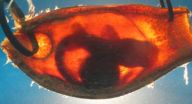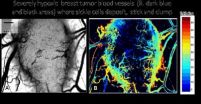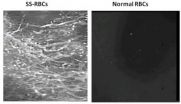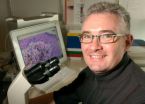Two studies appearing online Jan. 9, 2013, both in the journal PLOS ONE, show how a pattern of genomic information among infected individuals can be used to accurately pinpoint the cause of infection.
"Traditional diagnostic tests for infectious diseases rely on detecting the specific illness-causing pathogens. So you only find what you're looking for," said Geoffrey Ginsburg, M.D., PhD, a senior author on both studies and director of genomic medicine at the Duke Institute for Genome Sciences & Policy and professor of medicine.
Identifying the culprit pathogen guides the selection of treatment for sick patients; however, these traditional tests for infectious diseases can take several days and have varying levels of accuracy.
"Given that humans already have robust systems that recognize and try to ward off infectious organisms, can we harness the systems' response to distinguish between pathogens?" Ginsburg asked.
The body's reaction to infection, or host response, can be measured using genome-wide technologies that analyze human genes responding to the infection. Scientists can use the resulting "genomic signatures" to classify and diagnose infectious diseases based on the host response, without needing to test for a specific pathogen. The approach is especially appealing for detecting influenza since a genomic signature could identify new flu strains, which emerge frequently but may not be detected with existing diagnostic tests.
"The 2009 H1N1 flu pandemic highlighted the limitations of traditional pathogen-based testing," said Christopher W. Woods, M.D., MPH, associate professor of medicine, pathology, and global health at Duke and the flu study's lead author. "A test that could identify individuals exposed to the flu before the onset of symptoms would be an important and useful tool for guiding treatment decisions, especially with limited antiviral medications."
Woods and his colleagues set out to develop a test using two strains of flu. They inoculated 41 participants with either the H1N1 or H3N2 virus, and analyzed their blood samples to gauge the host response using a variety of genome-wide technologies.
The host response for the two different strains was similar, and was combined into a single genomic signature dubbed the Influenza Factor. The Influenza Factor distinguished people as infected or uninfected with flu with 94 percent accuracy, and could be used to test for multiple strains.
In addition, researchers detected the Influenza Factor before participants fully developed flu symptoms, as early as 29 hours after exposure to the virus and approximately 40 hours before the development of peak symptoms.
An early flu diagnosis could have several far-reaching benefits. Sick individuals could make the decision to stay home and rest, potentially limiting the illness's severity and transmission. In addition, they could begin taking antiviral medications, which are most effective when taken early.
The researchers also tested the Influenza Factor in a real-world setting with naturally acquired disease: the Duke University Hospital emergency department. They analyzed blood samples in 36 patients with confirmed cases of H1N1 flu during the 2009 pandemic; the Influenza Factor distinguished between H1N1-infected and non-infected individuals with 92 percent accuracy.
In a second study using a similar approach, researchers at Duke found a genomic factor for diagnosing Staphylococcus aureus, or staph, a common bacterial infection. As with flu tests, conventional methods of diagnosing staph involve culturing for the specific pathogen, which leaves room for error and often takes too long.
"Our current bacterial identification techniques rely on isolating the organism by culture. Although time-tested, cultures are slow, on average taking several days," said study author Vance G. Fowler, M.D., MHS, professor of medicine and infectious disease specialist at Duke. "During this time, clinicians are forced to make educated guesses as to how to treat patients, often over-treating with a broad cocktail of powerful antibiotics.
"These antibiotics can breed resistance, and may also be costly and have side effects. Reducing the time to diagnosis, which would allow the use of more tailored antibiotics, would help doctors make better treatment decisions sooner."
Duke researchers studied mice infected with staph or E. coli bacteria to measure the host response to infection. A genomic signature, derived from an analysis of blood samples, distinguished staph-infected mice from those infected with E. coli and those uninfected with 95 percent accuracy.
Researchers then studied blood samples from adult patients with bacterial infections who came to the Duke University Hospital emergency department. Using the patients' gene expression, researchers differentiated those with staph from those with no infection with 97 percent accuracy. The results were also replicated in pediatric patients, with the genomic signature helping to accurately diagnose staph infections around 95 percent of the time.
"This study demonstrates that the host response to bacterial infection can be harnessed as a potential diagnostic strategy, reducing the time required to establish a diagnosis and avoiding using unnecessary antibiotics," said Fowler.
The long-term goal of this research is to develop new diagnostic tools that use host gene expression patterns to quickly identify a patient's infection.
"These studies demonstrate that analysis of genomic factors show promise for early detection and accurately diagnosing the flu and staph," said Ginsburg. "Additional work is underway to develop more practical means of using these tests in a clinical setting."
###
In addition to Ginsburg and Woods, Duke influenza researchers include Micah T. McClain, Minhua Chen, Aimee K. Zaas, Timothy Veldman, Elizabeth Ramsburg, Joseph E. Lucas, and Lawrence Carin. Other researchers include Bradly P. Nicholson of the Durham VA Medical Center; Jay Varkey of Emory University; Stephen F. Kingsmore of the National Center for Genome Resources; Yongsheng Huang and Alfred O. Hero III of the University of Michigan; Robert Lambkin-Williams and Anthony G. Gilbert of Retroscreen Virology; and Seth W. Glickman of the University of North Carolina at Chapel Hill.
Researchers at Duke involved in the staph study include Ginsburg, Fowler and Woods, along with Sun Hee Ahn, Ephraim L. Tsalik, Derek Cyr, Yurong Zhang, Aimee K. Zaas, Tim Veldman and Joseph Lucas. Jennifer C. van Velkinburgh of van Velkinburgh Initiative for Collaborative BioMedical Research; Raymond J. Langley of Lovelace Respiratory Research Institute; Seth W. Glickman and Charles B. Cairns of the University of North Carolina at Chapel Hill; Emanuel P. Rivers and Ronny M. Otero of Henry Ford Hospital; and Stephen F. Kingsmore of Children's Mercy Hospitals & Clinics also contributed to this research.
The U.S. Defense Advanced Research Projects Agency (DARPA) provided funding for the flu study through contract N66001-07-C-2024. The staph study was funded by the National Institutes of Health (R01-AI068804, K24-AI093969, 5U01AI066569-05, and 3U01AI066569-05S1) and the Wallace H. Coulter Foundation.
END




